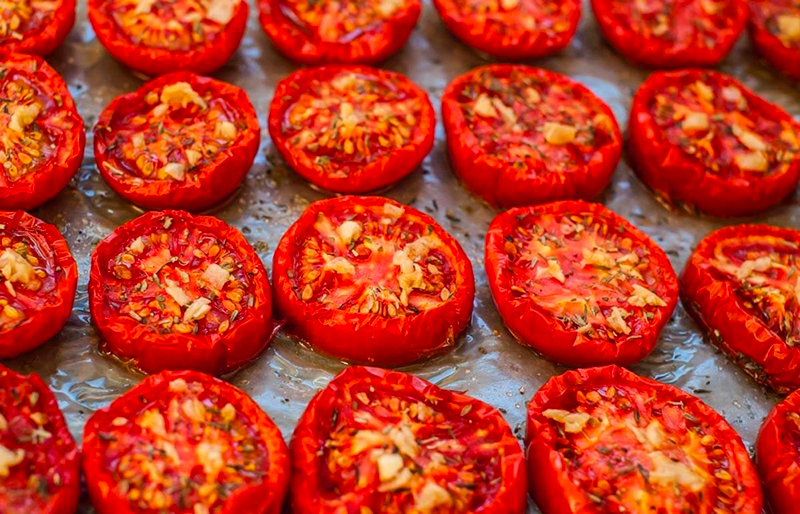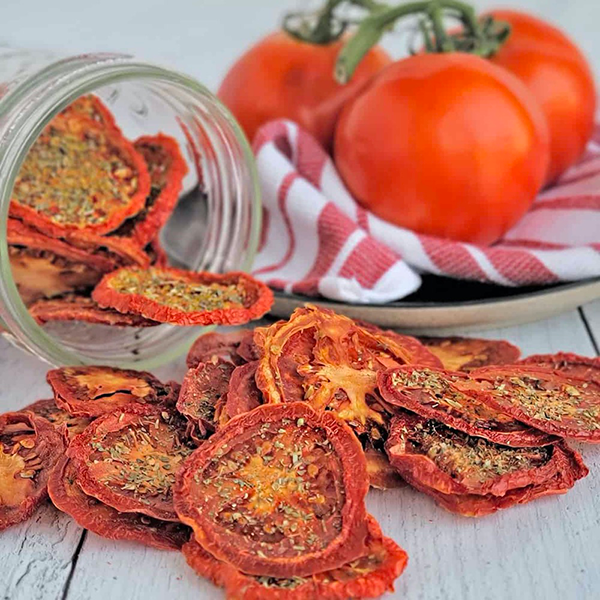The food processing industry has seen significant advancements in drying technologies, particularly with the introduction of hang type dryers. These machines are revolutionizing the way food products are dried, ensuring efficiency, quality, and sustainability. This article delves into the innovations in hang type dryer technology, their applications, benefits, and future prospects.

What Are Hang Type Dryers?
Hang type dryers are specialized equipment designed to dry food products by suspending them from hangers within a controlled environment. This method is particularly effective for items such as noodles, sausages, fish, and herbs, where even drying is crucial to prevent spoilage and maintain texture. Unlike traditional tray dryers, hang type systems minimize contact points, reducing the risk of sticking or deformation.
Key Innovations in Hang Type Dryer Technology
1. Controlled Environment
Hang type dryers provide precise control over temperature, humidity, and airflow. This controlled environment is essential for preserving food quality by ensuring that moisture is removed evenly and efficiently. The ability to maintain optimal conditions prevents microbial growth and enhances the flavor profile of the products.
1. Temperature Control: Advanced sensors monitor the internal temperature of the drying chamber, allowing for real-time adjustments. This ensures that sensitive products are dried at optimal temperatures to preserve their nutritional value.
2. Humidity Regulation: Maintaining appropriate humidity levels is crucial for preventing spoilage. Modern hang type dryers can adjust humidity levels dynamically based on the product being dried.
3. Airflow Management: The design of hang type dryers allows for uniform airflow distribution throughout the chamber. This ensures that every product receives equal exposure to drying conditions.
2. Energy Efficiency
Modern hang type dryers utilize heat pump technology, which can save up to 75% energy compared to traditional drying methods. This innovation not only reduces operational costs but also minimizes the environmental impact of food processing operations.
1. Heat Recovery Systems: Many hang type dryers are equipped with heat recovery systems that capture waste heat generated during the drying process and reuse it to preheat incoming air or water. This significantly enhances energy efficiency.
2. Low Energy Consumption: By operating at lower temperatures over extended periods, heat pump technology reduces energy consumption while still achieving effective drying results.
3. Intelligent Digital Control Systems
Today's hang type dryers come equipped with intelligent digital controls that simplify operation. Users can program specific drying cycles tailored to different products, ensuring consistent results every time. These systems can monitor and record data on temperature, humidity, and airflow, providing valuable insights into the drying process.
1. User-Friendly Interfaces: Modern controls often feature touchscreens that allow operators to easily set parameters and monitor progress in real-time.
2. Data Logging: The ability to log data over time helps manufacturers analyze trends and make informed decisions about process improvements.
4. Automation Features
Automation features such as automatic loading and unloading systems improve efficiency and reduce labor costs. Predictive maintenance capabilities help prevent breakdowns by analyzing data from the control system to forecast when maintenance is needed.
1. Robotic Systems: Some advanced hang type dryers incorporate robotic arms for loading and unloading products, further streamlining operations.
2. Maintenance Alerts: Predictive maintenance alerts notify operators of potential issues before they lead to downtime, ensuring continuous operation.

Applications in Food Processing
Hang type dryers are versatile and can be used for a variety of food products:
1. Noodles: The suspended arrangement prevents noodles from clumping together, ensuring uniform drying without compromising their shape or texture.
2. Meats: These machines provide a controlled environment for curing and drying meats, preventing harmful bacterial growth while enhancing flavor development.
3. Fish and Seafood: Gentle drying conditions help retain natural flavors and aromas that are often lost during high-temperature drying methods.
4. Herbs and Spices: Low-temperature drying preserves essential oils and flavors, ensuring high-quality final products.
5. Fruits and Vegetables: From dried apple slices to sun-dried tomatoes, hang type dryers produce high-quality dried fruits and vegetables with minimal nutrient loss.
Advantages of Hang Type Dryers
1. Improved Product Quality
The gentle drying process employed by hang type dryers helps maintain the integrity of the food product. Unlike other methods that may cause shrinkage or toughening of textures, hang type dryers preserve the original characteristics of foods.
2. Reduced Risk of Contamination
By minimizing contact with surfaces during the drying process, hang type dryers reduce the risk of contamination from bacteria or foreign substances. This is especially important in food processing where hygiene standards must be maintained.
3. Flexibility in Production
Hang type dryers can be easily adjusted for different types of products without significant downtime. This flexibility allows manufacturers to diversify their product offerings without needing multiple types of equipment.
Case Studies
Case Study 1: Noodle Production
A large noodle manufacturer replaced traditional tray dryers with hang type drying machines. The result was a significant improvement in product quality; noodles dried more evenly with less breakage and clumping. This led to higher customer satisfaction and reduced waste.
Case Study 2: Sausage Curing
A sausage producer implemented hang type drying machines for their curing process. They were able to reduce curing time by 30% while maintaining the desired flavor and texture. The controlled environment also improved food safety by preventing bacterial growth.
Future Trends in Hang Type Dryer Technology
As technology continues to evolve, several trends are emerging in the development of hang type dryers:
1. Integration of IoT Technology
The Internet of Things (IoT) is making its way into food processing equipment. Future hang type dryers may feature IoT connectivity that allows for remote monitoring and control via smartphones or computers.
2. Enhanced Sustainability Practices
With increasing focus on sustainability in food production, manufacturers are likely to invest in greener technologies such as solar-assisted drying systems or biodegradable materials for construction.
3. Advanced AI Algorithms
Artificial intelligence could play a role in optimizing drying processes by analyzing data patterns over time to suggest improvements or adjustments automatically.
Conclusion
Hang type dryers represent a significant advancement in food processing technology. Their ability to provide efficient, uniform drying while preserving food quality makes them invaluable tools for manufacturers worldwide. With energy-efficient designs and customizable features, these machines are poised to play a crucial role in the future of food processing.
As industries continue to evolve towards more sustainable practices while maintaining high standards of quality, innovations in hang type dryer technology will undoubtedly lead the way towards enhanced productivity and sustainability in food processing operations.

FAQ
1. What types of foods can be dried using hang type dryers?
Hang type dryers are suitable for a variety of foods including noodles, sausages, fish, herbs, fruits like apples and pears, as well as vegetables such as tomatoes and peppers.
2. How do hang type dryers ensure even drying?
The suspended arrangement allows maximum surface area exposure to airflow, preventing uneven drying. Controlled temperature and airflow management further contribute to uniform results.
3. What are the energy savings associated with heat pump technology?
Heat pump technology can result in energy savings of up to 75% compared to traditional drying methods by recycling heat within the system.
4. Can hang type dryers be customized?
Yes, manufacturers offer various customization options including modifications to hanger design, chamber size adjustments, and tailored control systems.
5. How do intelligent controls enhance operation?
Intelligent controls allow users to program specific drying cycles tailored to different products while monitoring temperature, humidity, and airflow for optimal performance.
Citations:
[1] https://www.dryeratech.com/hang-type-drying-machines-a-game-changer-for-food-processing.html
[2] https://www.archdaily.com/1023022/beyond-the-basics-innovations-transforming-bathroom-hand-dryer-technology
[3] https://www.dryeratech.com/hang-type-dryers-the-secret-to-perfectly-dried-products.html
[4] https://patents.google.com/patent/CN110207480A/zh
[5] https://www.handryersuk.co.uk/blogs/blog/who-invented-the-hand-dryer
[6] https://www.mediclinics.com/en/blog/95_the-future-of-hand-drying-is-here-u-flow-by-mediclinics.html
[7] https://gcwgandhinagar.com/econtent/document/1588156026Unit%20V%20Types%20of%20dryers%20and%20their%20applications.pdf
[8] https://patents.google.com/patent/CN1405396A/zh
[9] https://www.globalgrowthinsights.com/blog/hand-dryers-companies-571











